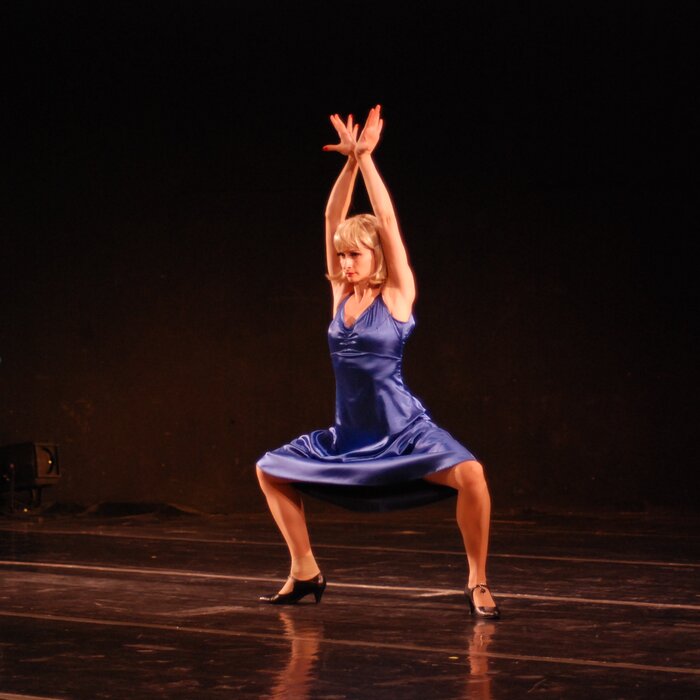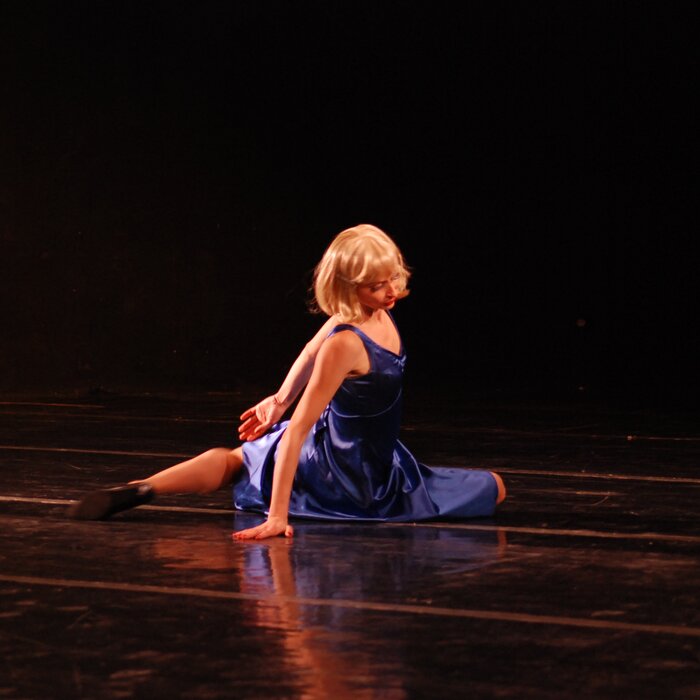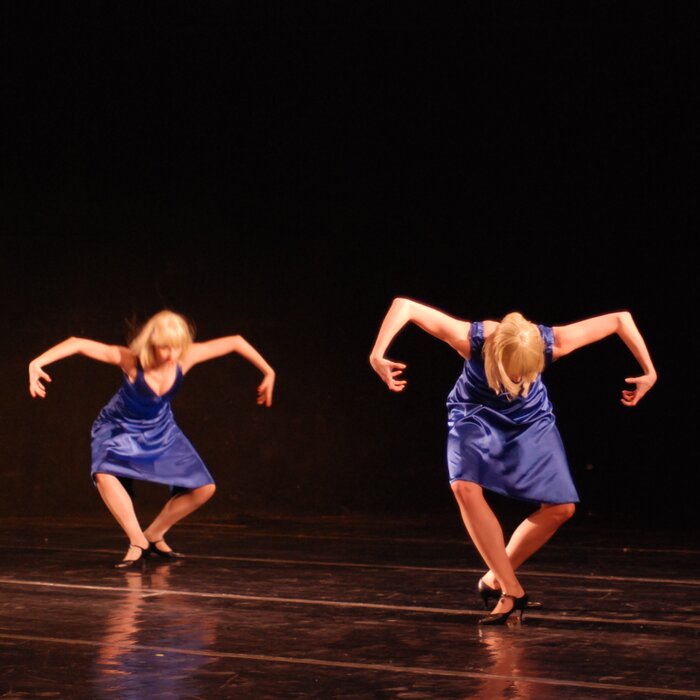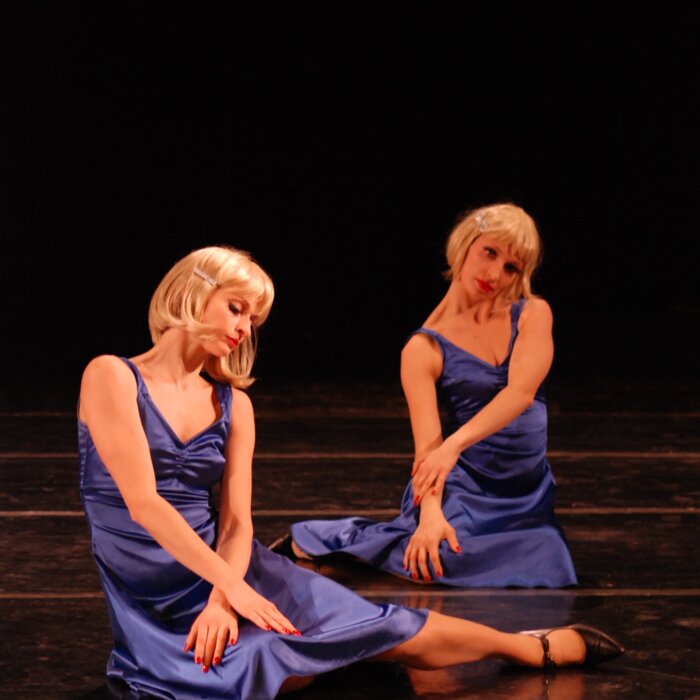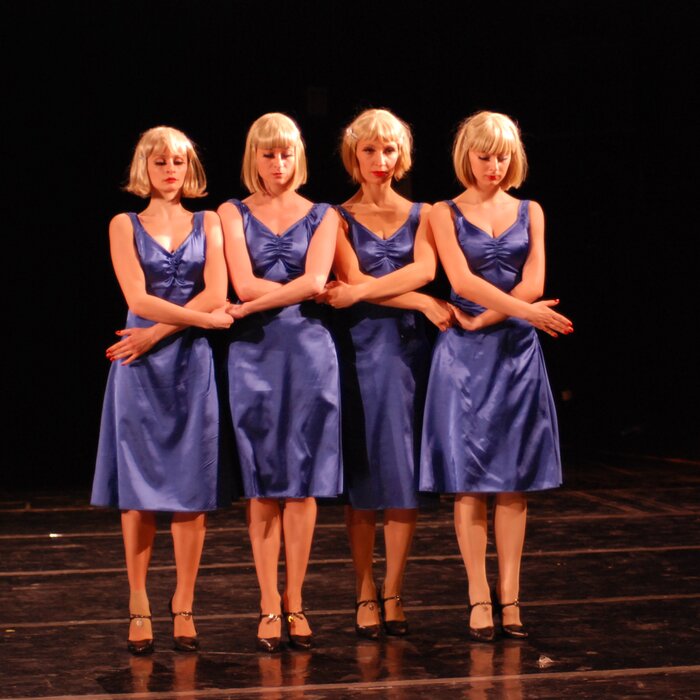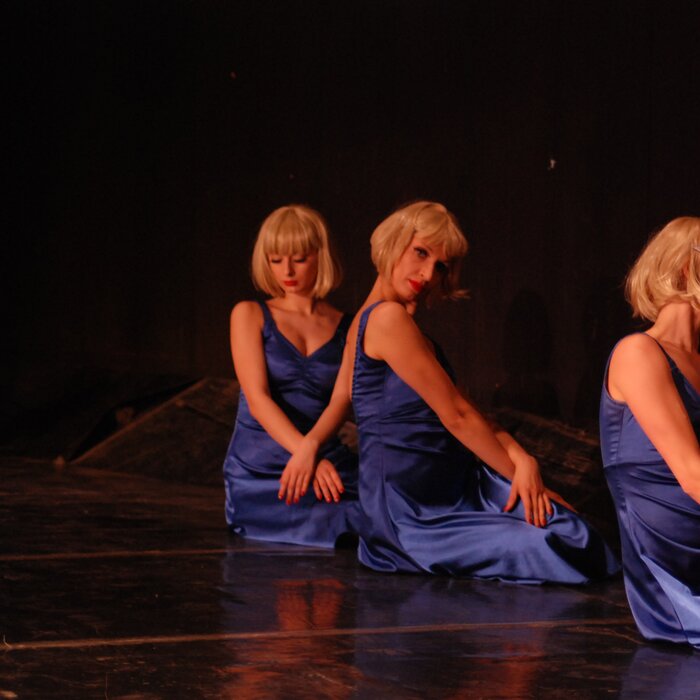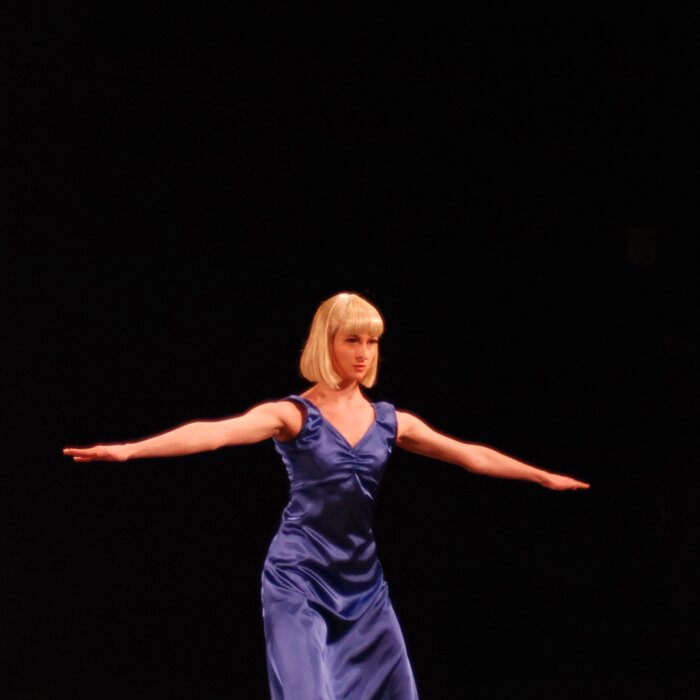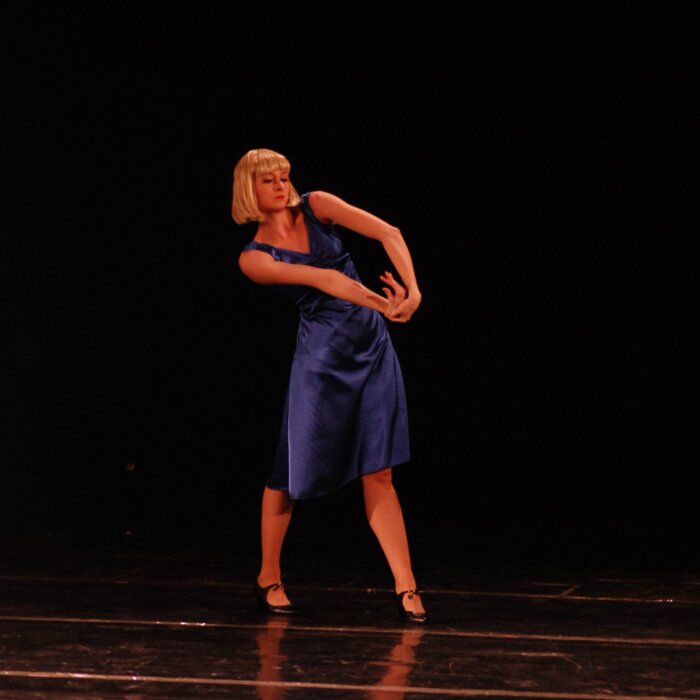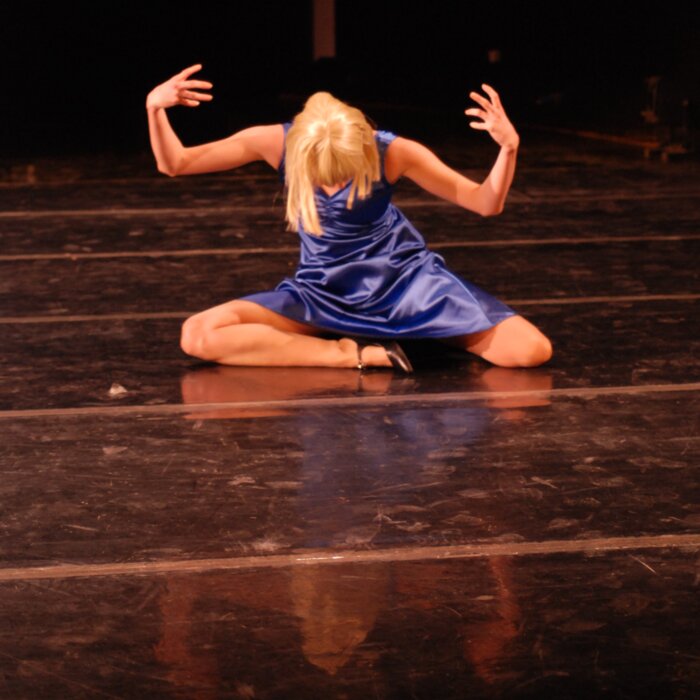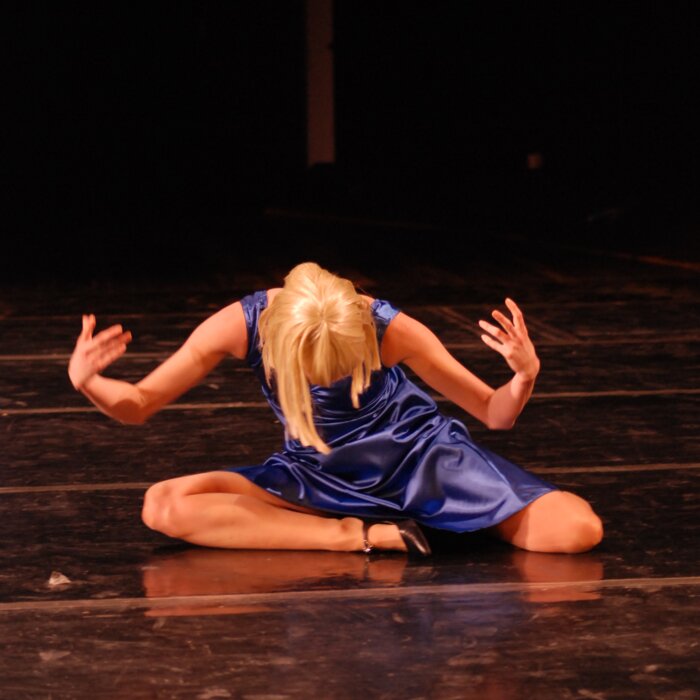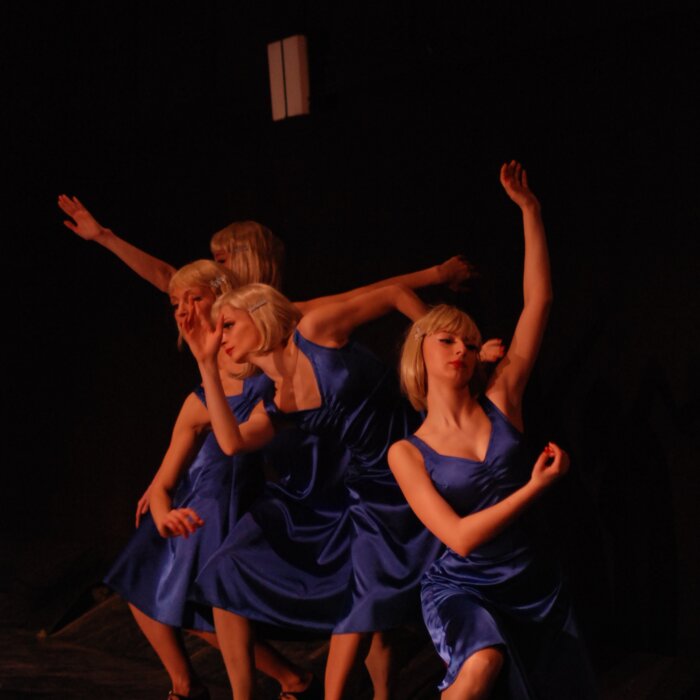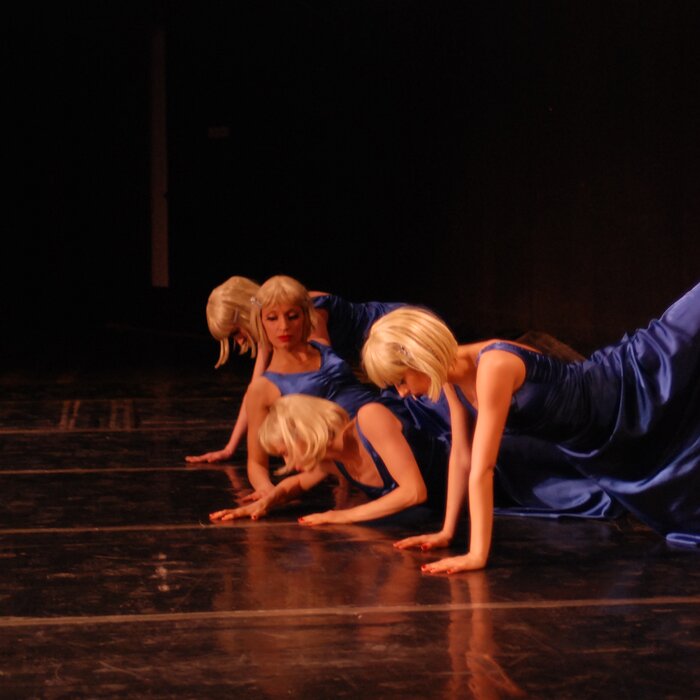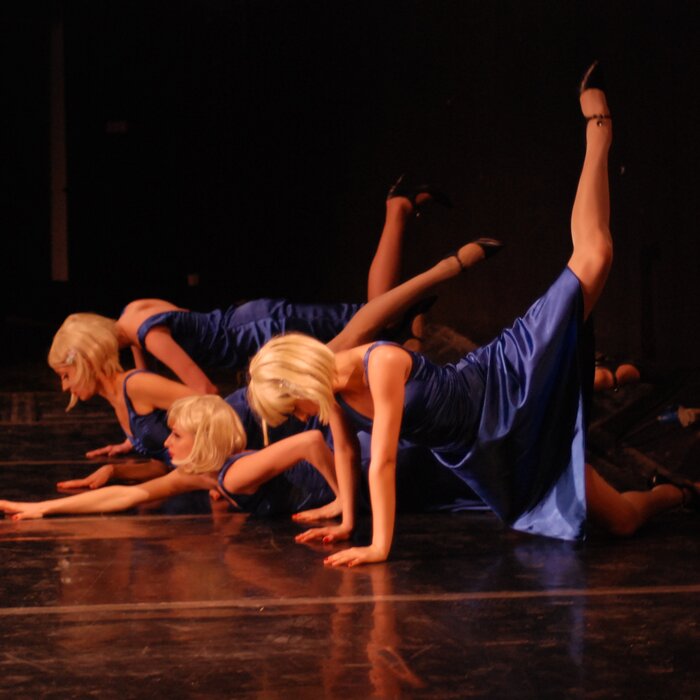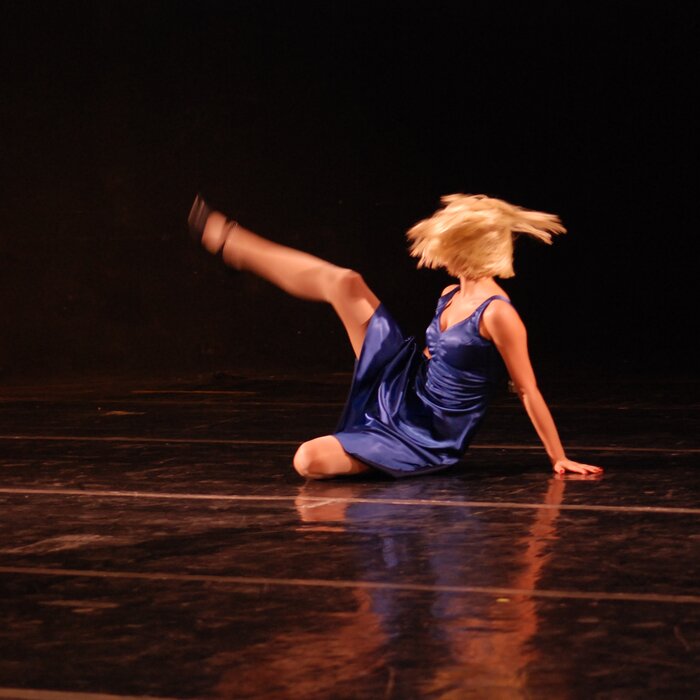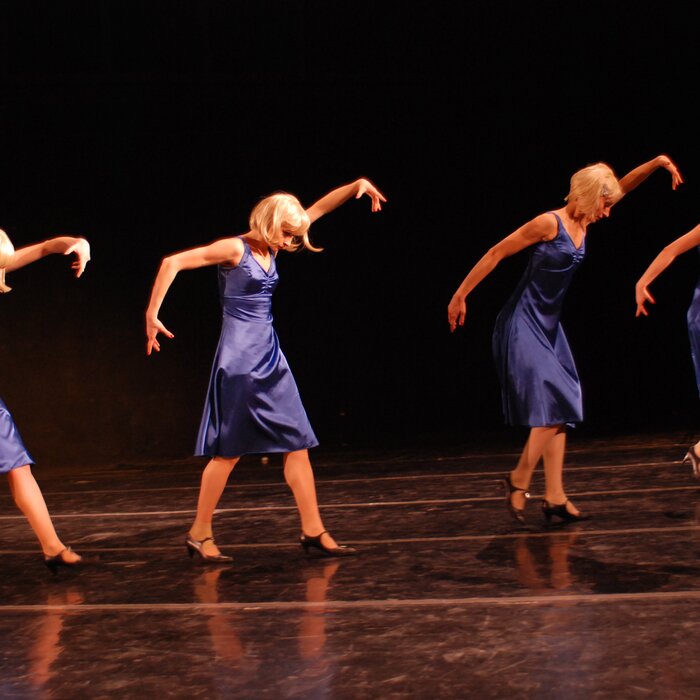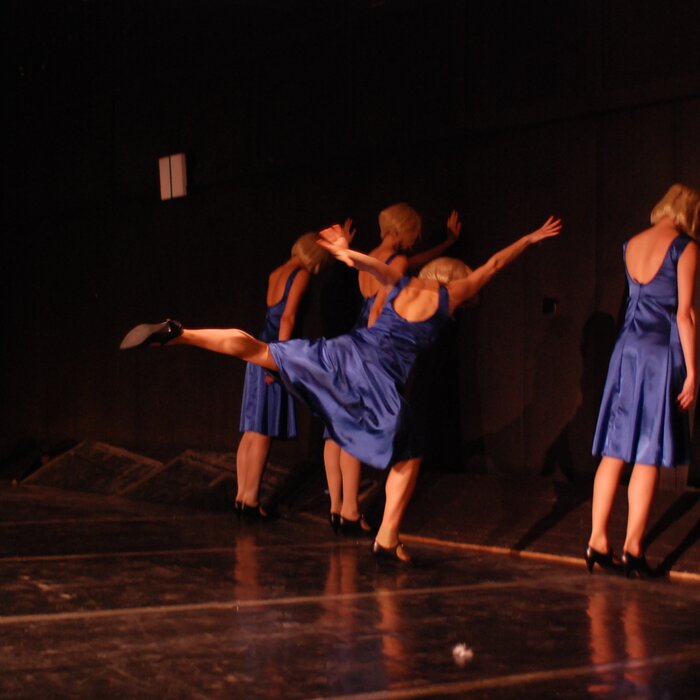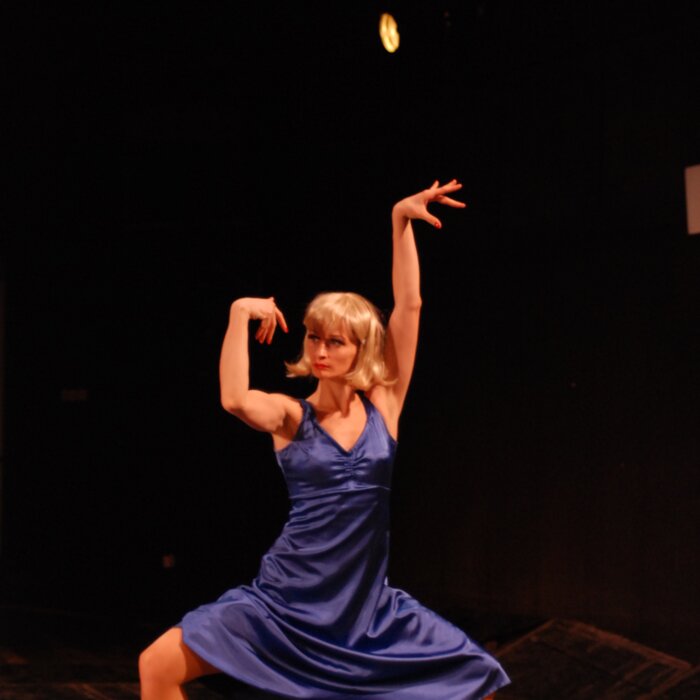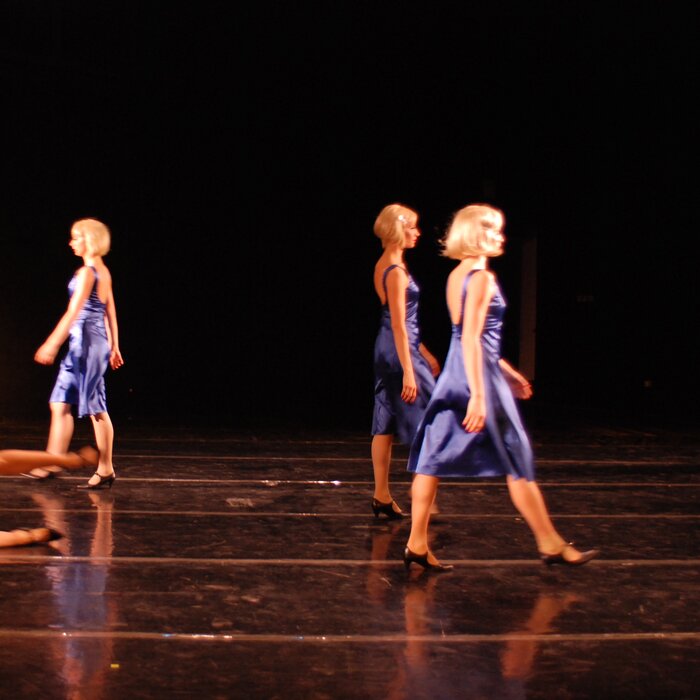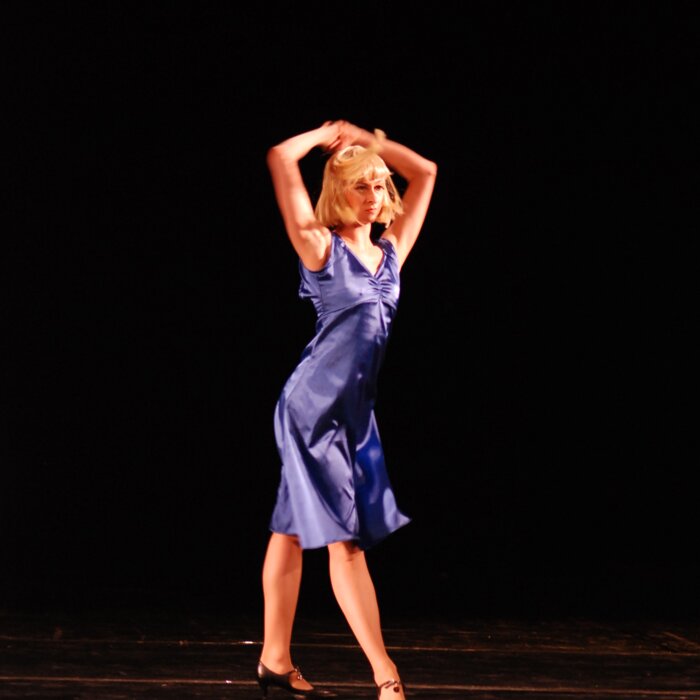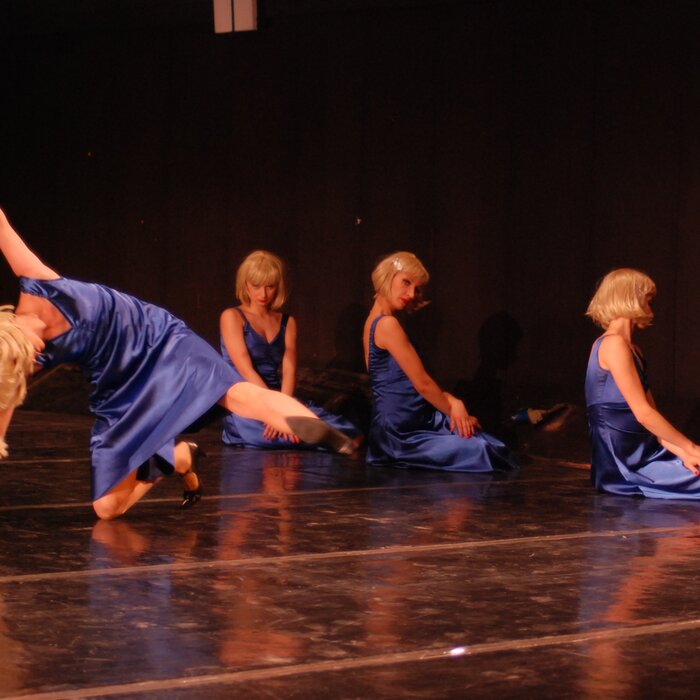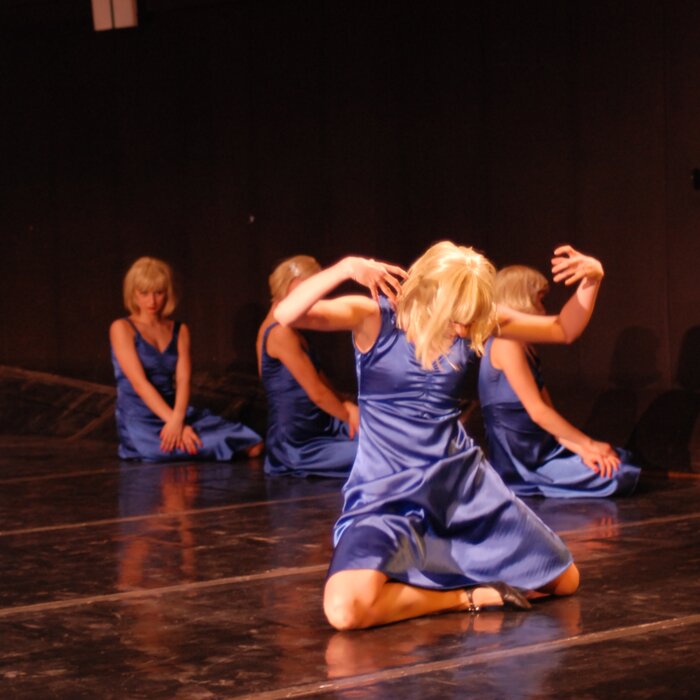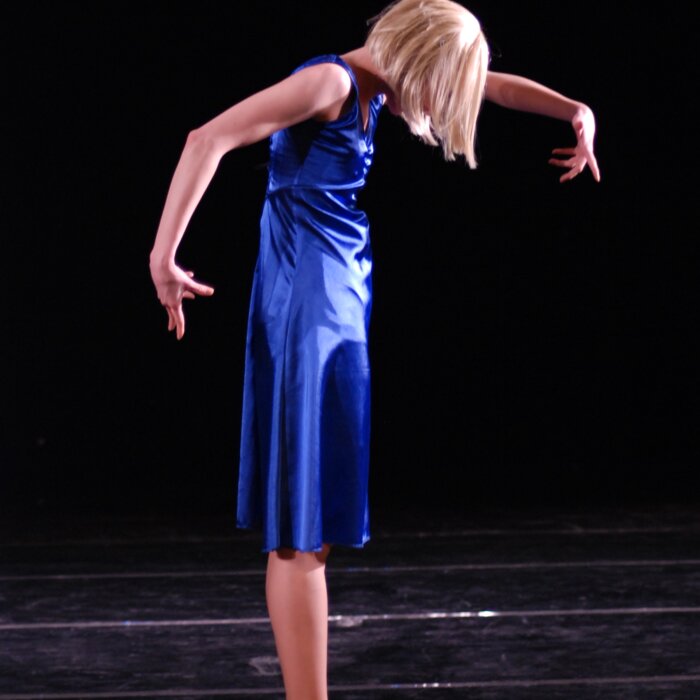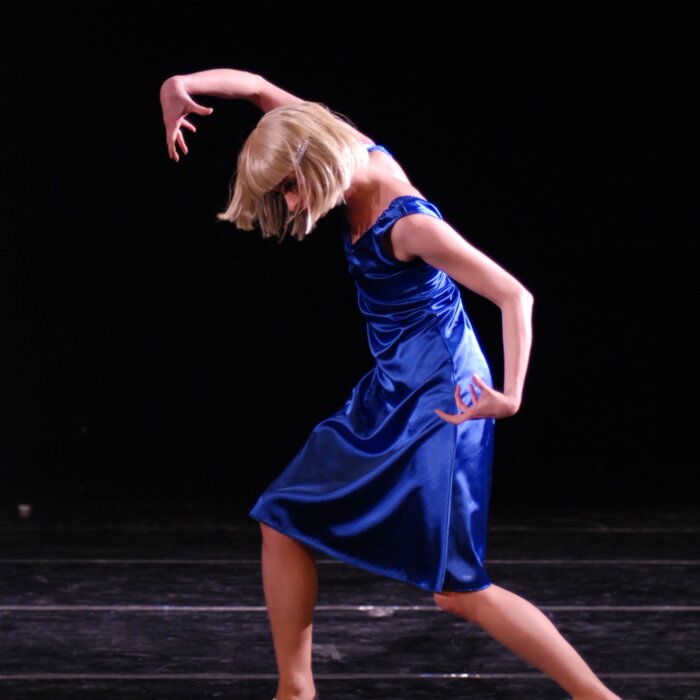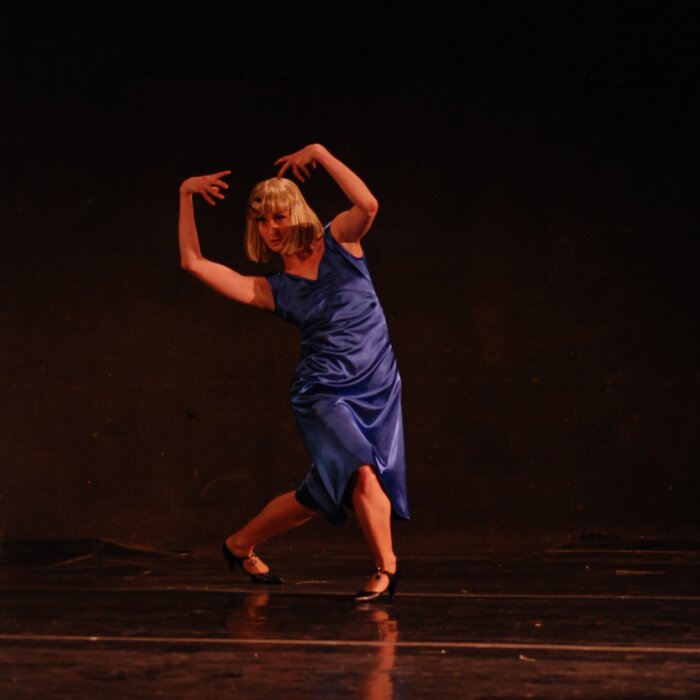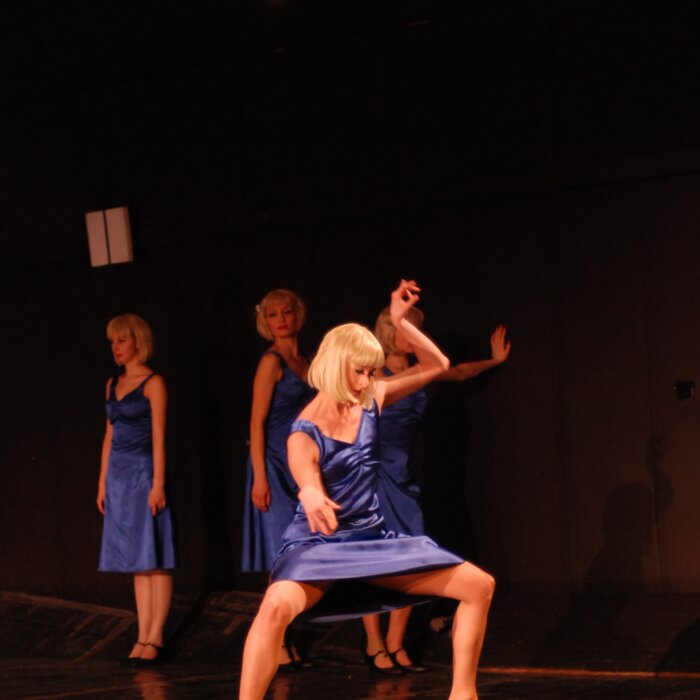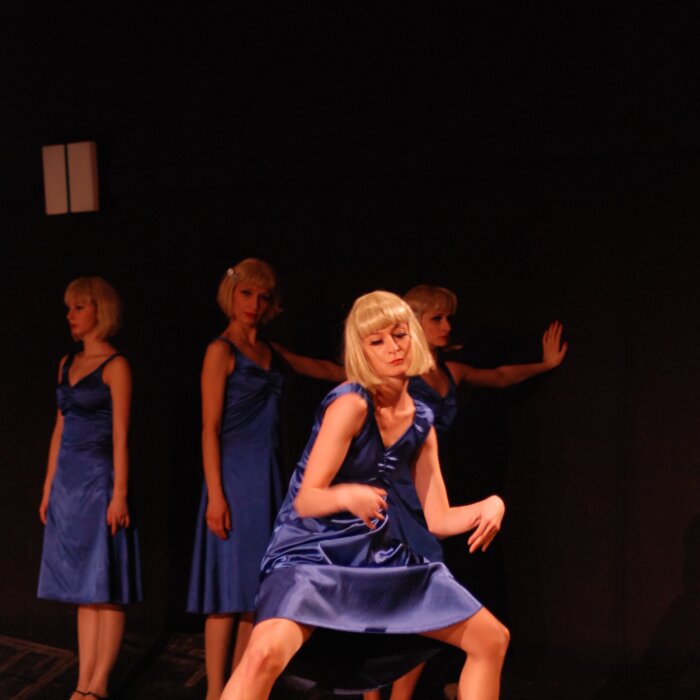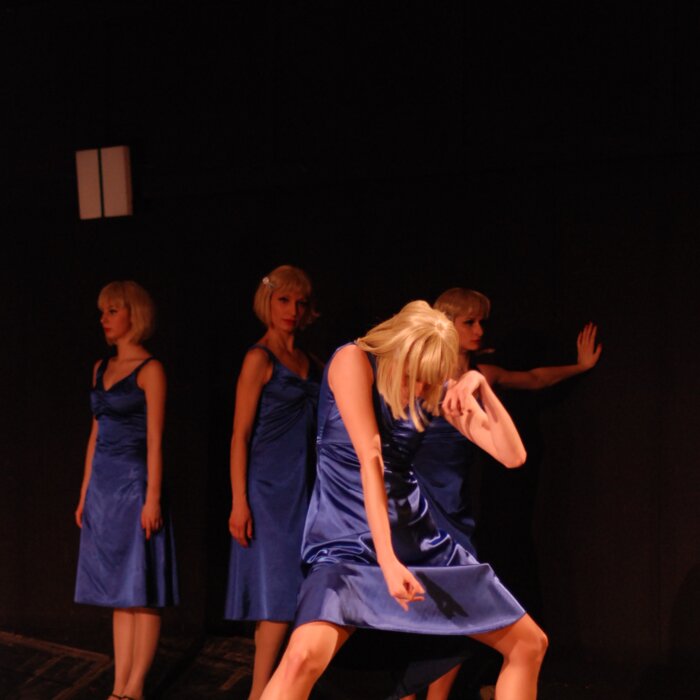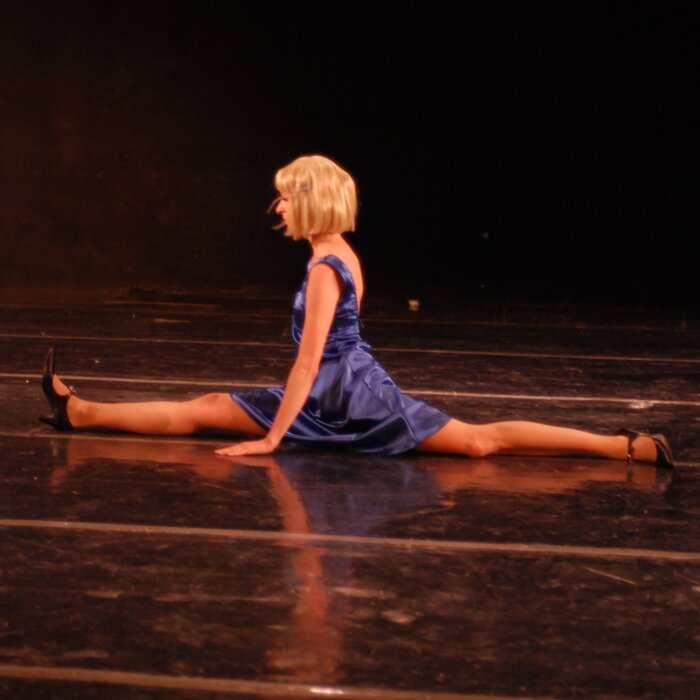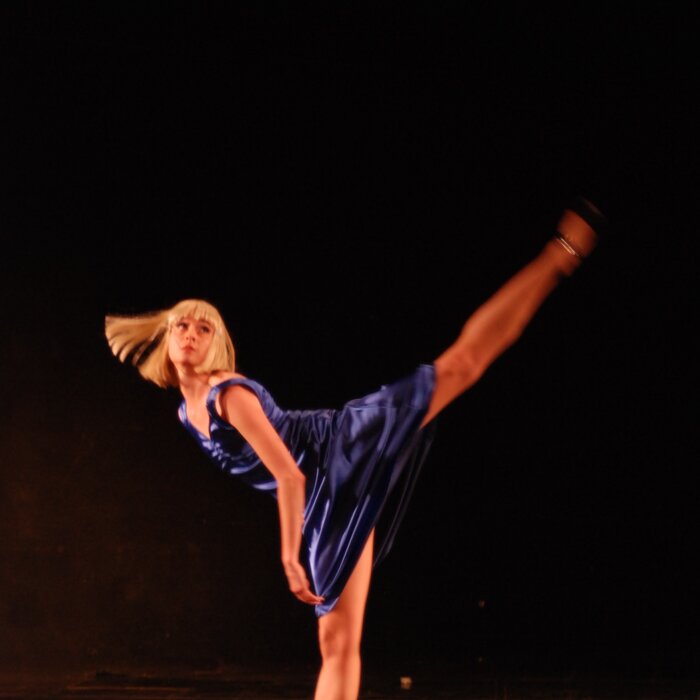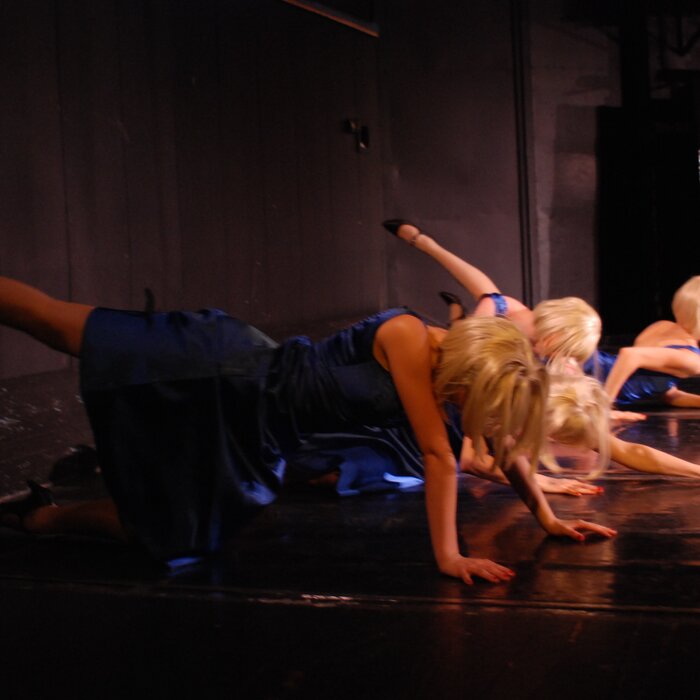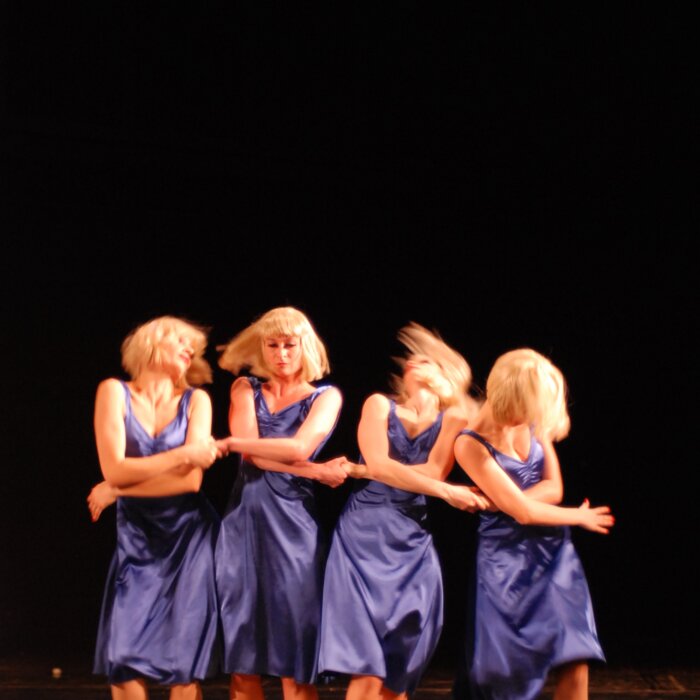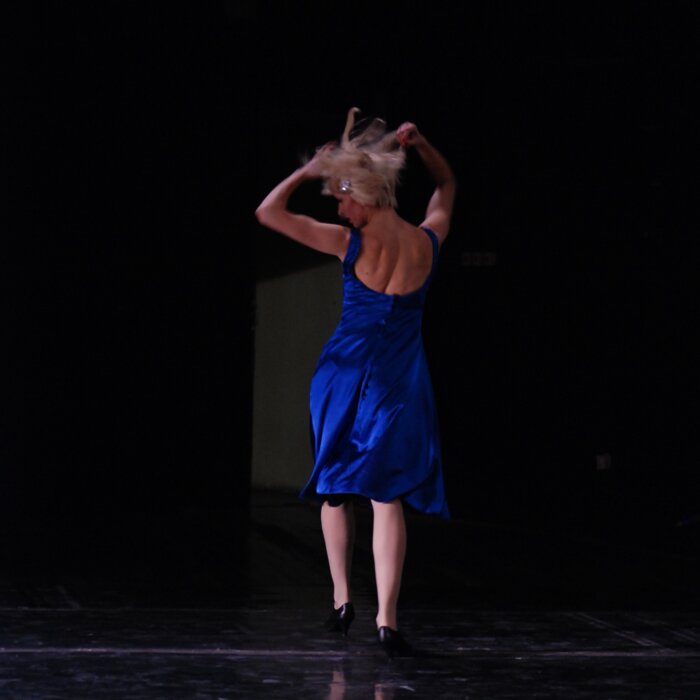In Indigo Quartet (Indigo Kvartet), Iskra Shukarova, accompanied by four ballet dancers, interprets the search for personal identity through individual and group interactions within a constructed movement system. The choreography is described by ballet critic Gjurgjica Jovanovska (Vreme, 16.02.2008) as grotesque and layered with contemporary stylistic textures, creating a visual and performative contrast. Shukarova’s exploration goes beyond the described and the aesthetic contestations of ballet movement and exploration of modern and contemporary dance vocabulary on ballet-trained dancers’ bodies. The choreographic work delves into the complexities of women’s identity by using the female body as both subject and symbol and engages them in somatic research that interrogates how perceptions are carried within the body and how they manifest physically. With this work she explores femininity and how the female body absorbs, expresses, and is shaped by the gazes, or the environment—be it social, cultural, or institutional. In that regard, Indigo Quartet might be perceived also as a reflection on the position of women, both on stage and in broader social contexts. It challenges the traditional, vertical, often passive, representation of women, offering a more nuanced, self-determined portrayal of feminine identity and bodily presence.
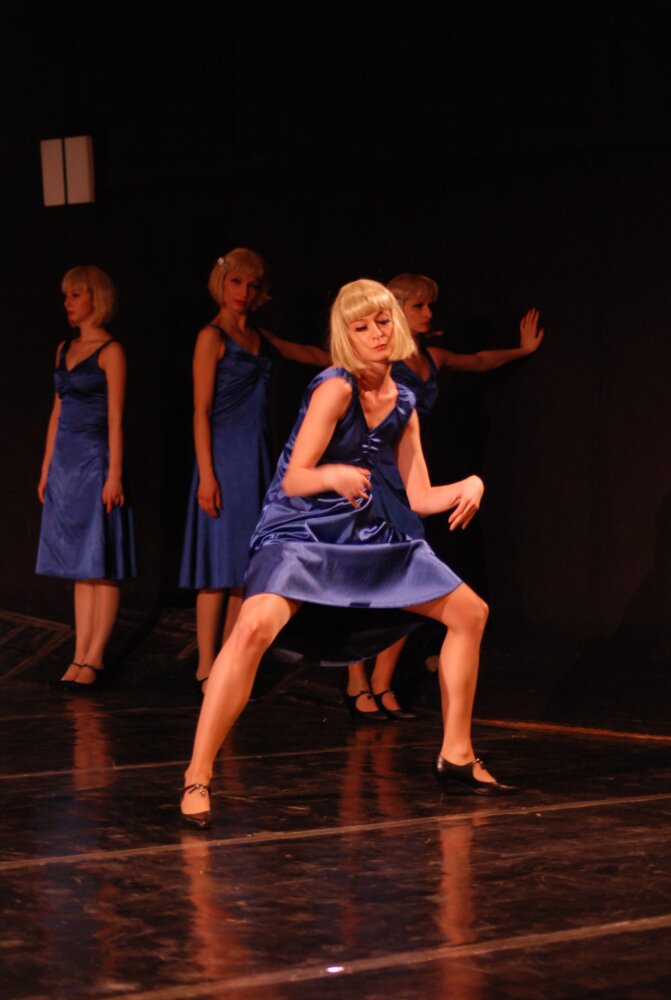
EN
Person(s) / Collective:
Iskra Šukarova
Title:Indigo Quartet
Date of Premiere: 2008
Production:
Macedonian Opera and Ballet
choreographer:
Iskra Šukarova
dancer:
Iskra Šukarova
dancer:
Zejnepa Dimkoska
dancer:
Anita Chavoli
dancer:
Cvetanka Stojanovska
